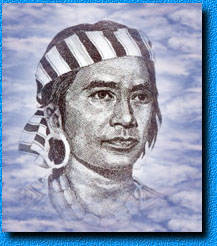 |
He was the King of Mactan Island and was known as the first Filipino hero. When
Ferdinand Magellan, a Spaniard who "discovered" the Philippines, landed in Cebu, he
ordered Filipinos to honor the king of Spain. Chief Lapu-Lapu refused his demand.
Magellan, along with 48 soldiers, met Lapu-Lapu in Mactan Island for a battle. During the
battle, Magellan and 15 of his men were killed. For 54 years thereafter, no Spaniard set
foot in the Philippine soil.
|
 |
|
Jose Rizal, our national hero, was born in Calamba, Laguna. His parents were Francisco
Mercado Rizal and Teodora Alonso. He was educated in Europe and obtained his
license in opthamology and philiosphy in France. He wrote Noli Me Tangere (Touch Me
Not) and El Filibusterismo (The Rebel) in Europe, which told about the oppression of
Spanish colonial rule. In 1892, when Rizal returned to the Philippines, he formed La Liga
Filipina, a forum for Filipinos to express their hopes for reform and freedom from the
oppressive Spanish colonial administration. He was arrested as a revolutionary and was
exiled in Dapitan, Mindanao. His writings and La Liga Filipina were banned. Later, he was
imprisoned in Fort Santiago, Manila after a trial. On December 30, 1896, he was executed
by a firing squad at Bagumbayan, now known as Luneta, in Manila for
spreading ideals of revolution.
| 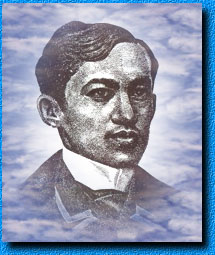 |  |
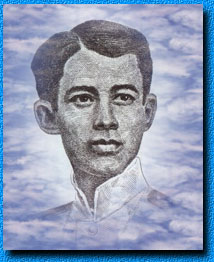 |
He is remembered as the "Hero of Tirad Pass" and to the Americans as an "Officer and a
Gentleman." Pilar, at 24, was the youngest general in the Revolutionary Army, who fought
bravely against the Americans, with only 60 men. On December 2, 1899, he was killed in
the Tirad Pass while commanding Aguinaldo's rearguard. Before his death, he wrote, "I am
surrounded by fearful odds that will overcome me and my gallant men, but I am pleased to
die fighting for my beloved country." The Tirad Pass has been declared a national shrine.
|

|
|
She is a famous heroine in Philippine
history. She was married to Fulgencio Ramos with whom she had six
children. Her husband died early, and she supported her
children on the produce of rice and
sugarcan from their 25 acres of land. In 1896, the Katipuneros of
Andres Bonifacio declared war on her land against the Spaniards.
Secret meeting of the Katipuneros
were held at her house, and she tended Filipinos who managed to escape
by dressing their wounds, feeding them, and hiding them from the Spaniards.
Soon, the Spaniards learned about her cause and the underground meetings,
and she was exiled to Marianas along with 171 Filipinos charged with
rebellion. In 1903, she came
back under the American regime. On March 2, 1919, she died, at the
age of 107. She was called the "Mother of the Philippine Revolution."
| 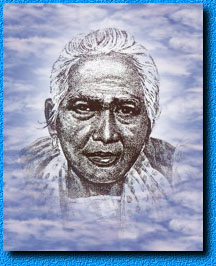 |  |
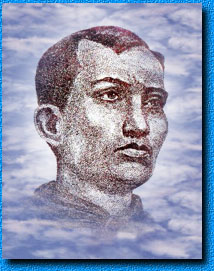 |
He is the founder the Katipunan, a secret organization aimed to overthrow Spanish
sovereignty in the Philippines. Its full name was Kataastaasan Kagalanggalangang
Katipunan ng Mga Anak ng Bayan (Highest and Most Respected Association of the Sons
of the Country), and was known by its intitials K.K.K. Bonifacio is also known as the
"Great Plebian." He and Emilio Jacinto issued stirring literature to arouse people to revolt
against the Spaniards. On August 23, 1896, Bonifacio assembled his men at Balintawak,
tore their cedulas (poll tax), and declared the start of rebellion. However, a conflict of
leadership developed between he and Emilio Aguinaldo, who was leading the struggle in
his home province of Cavite. After this power struggle, on
May 10, 1897, Bonifacio was shot and killed in Cavite.
|
 |
|
He established the newspaper, Diaryong Tagalog, which published criticisms on the way
the Spaniards ran the government and treated its people. In Spain, he became
editor of La Solidaridad founded by Graciano Lopez Jaena. For six years, he wrote
articles on the theme of liberty and equality for the Filipinos. Copies were smuggled into the
Philippines in Tagalog and were read by the revolutionists. On July 4, 1896, he died of
tuberculosis in Barcelona, a pauper, away from his family.
| 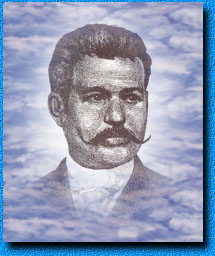 |  |
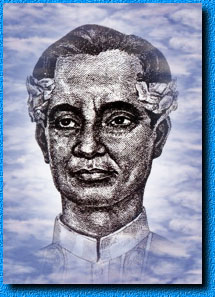 |
He was born in Bigaa, central Bulacan. Balagtas labored under strict friar supervision.
Themes had to fall under the constraints of official religious themes in recommended
meter and structure. He took all obstacles on, settling on allegorical poetry as the
medium to carry his message. With meter and metaphor approval, he ushered Tagalog
into the realms of protest against tyranny. The friars thought that Florante at Laura, his
best known work, was about Christians and Moors duelling in mythical kingdoms to the
correct ending. The metre was fine; there was even music to it. In reality, he depicted the
injustices Filipinos suffered in the hands of the Spaniards, and the evils that beset them
during the Spanish regime. This poem contained ideals from which people of
today can deduce morals. Thus, it is considered one of the best poems, and Balagtas is
known as the "King of Tagalog Poems."
|
 |
| Home
| Headline News
| Recipe
| Guestbook
| Immigration News
| Message
| Philippines
| National Heroes
| Gallery
| Filipino Professionals
| Filipino Businesses
| Filipino Associations
| Classified Ads
| Joke Of The Day
| Chatroom |
Questions regarding site: webmaster@philconnect.com
For more information: info@philconnect.com
Copyright © 1998 PhilConnect! All Rights Reserved.
|